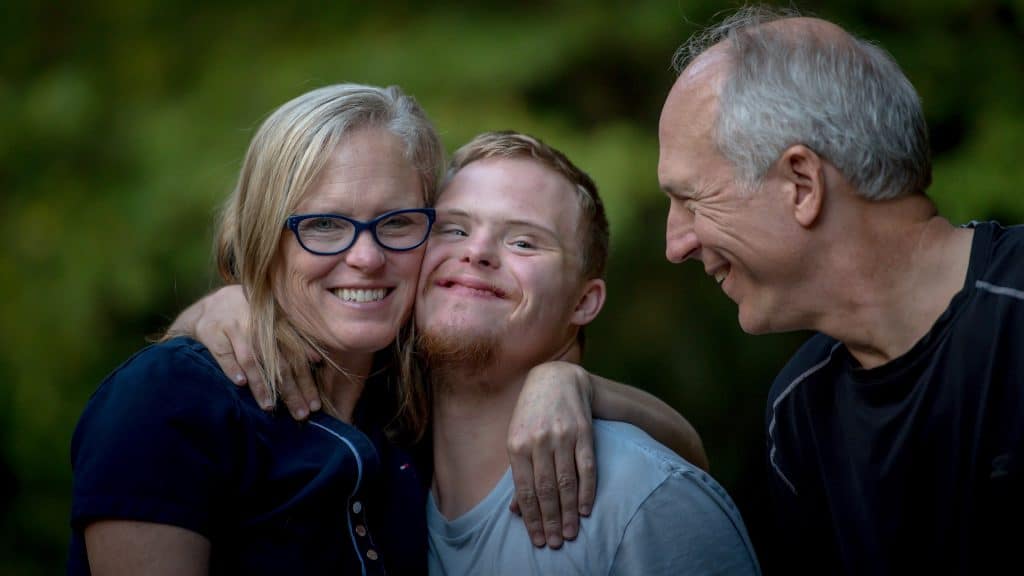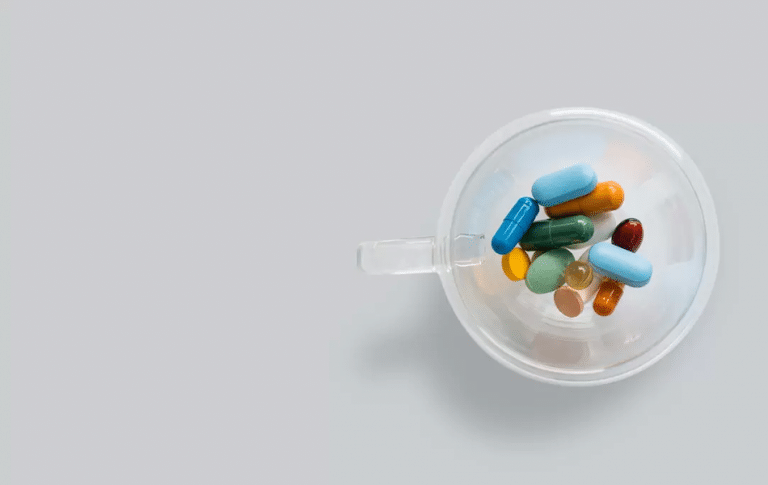33 Critical Down Syndrome Statistics & Facts for 2024

It’s time to raise Down syndrome awareness. In the following article, we’ve collected the latest Down syndrome statistics and facts to break misconceptions.
It’s a well-known fact that our genes determine our features. They hold the information about everything, from teeth arrangement and eye color to our most distinguished psychological makeup.
Since its discovery over 150 years ago, Down syndrome (DS) has been the most researched, described, and scientifically presented genetic disorder. That said, there’s still a lot of misinformation about the condition. Let’s clear that up.
Top Ten Down Syndrome Statistics for 2024
- Medical costs for children with DS are 12 times higher than for those without the syndrome.
- There are roughly 6 million people with Down syndrome worldwide.
- It is estimated that more than 200,000 people in the US have Down syndrome.
- The prevalence of Down syndrome in the US is 1 in every 700 live births.
- People with Down syndrome have ten times the risk of COVID-19 death.
- People with the condition have an IQ of less than 70.
- In the US, 67% of pregnancies with Down syndrome are terminated.
- There is a 35%–50% chance that the child would inherit the syndrome if one parent has it.
- 99% of people with Down syndrome are happy with their lives.
- 40% of families of children with DS have one family member who stopped working because of the child's condition.
Must-Know Down Syndrome Statistics and Facts
With Down syndrome being widely prevalent worldwide, we are to educate ourselves on this genetic disorder. Below, you’ll find the overview of the syndrome compiled with the latest statistics and must-know facts.
1. Down syndrome is a genetic condition.
(Medline Plus)
Is Down syndrome genetic? The answer to it is yes.
Down syndrome is a chromosomal condition. People with the syndrome have a characteristic facial appearance, weak muscle tone (infancy), and intellectual disability. Those born with Down syndrome might also have congenital disorders. What’s more, speech and language develop slower in children with the condition. Although living with the syndrome can present a challenge, most people grow into socially integrated individuals.
2. Down syndrome facts point out that people with the condition have 47 chromosomes.
(Medline Plus)
Down syndrome is caused by abnormal cell division that follows fertilization. Usually, the human genome consists of 46 chromosomes. Due to unknown factors, an extra chromosome 21 might be created at the time of cell division, totaling 47 chromosomes.
3. Facts on Down syndrome reveal that 95% of people with the condition have the Trisomy 21 type.
(CDC)
Trisomy 21. As many as 95% of people with DS have this type. Every cell of their body has three separate copies of chromosome 21 instead of the regular two.
Translocation Down syndrome. The prevalence of this type is about 3%. It happens when an extra chromosome 21 gets attached to a different chromosome instead of being separate.
Mosaic Down syndrome. This type affects about 2% of people with DS. These people have an extra chromosome only in some cells, while other cells have a regular chromosome count.
4. Facts about Down syndrome verify there is no cure for the condition.
(Medline Plus)
That said, some treatments such as physical, speech, and occupational therapy can aid early childhood development. During adolescence, emotional and behavioral therapy can produce significant results, too. All in all, an individual approach is necessary.
5. Based on statistics, Down syndrome is hereditary in about 1% of cases.
(NDSS)
According to the National Down Syndrome Society, the disorder doesn’t run in the family. Although it’s a genetic condition, heredity isn’t a factor in trisomy 21 and mosaic-type DS. However, there is a hereditary component in one-third of DS cases resulting from translocation.
6. Down syndrome statistics by race and economic status imply the condition is equally prevalent.
(Everyday Health) (Pediatrics Nationwide)
Down syndrome can affect anyone, no matter their class or race. That said, race does come into play when life expectancy is brought up. Namely, the median age of life expectancy for people with Down syndrome is 50 for White and only 25 for Black people.
7. Most people with Down syndrome share its physical signs.
(NIH)
Down syndrome facts suggest that the most common physical signs of the condition are:
- Flattened facial profile and nose
- Small head, ears, and mouth
- Upward slanting eyes
- Wide and short hands with short fingers
- Poor or decreased muscle tone
Studies have also shown that obesity is more prevalent in people with Down syndrome than those with intellectual disabilities that are not associated with the condition.
8. Medical costs for children with DS are much higher than for those without the disorder.
(CDC)
Treatment of the condition does come with considerable expenditure. Namely, among children aged 0–4 with private insurance, the average medical care costs for children with Down syndrome are 12 times higher than those without the condition.
Down Syndrome Statistics Worldwide
Read on to find out how prevalent the condition is worldwide. Below you’ll learn how many people are living with DS in the US and worldwide. You’ll also get to know which countries have the highest prevalence rates of the condition. Without further ado, let’s dive right in!
[visualizer id=”97206″]
9. France has the highest number of annual Down syndrome live births in Europe—520.
(WHO)
The European office of the World Health Organization reveals Down syndrome statistics by country. The top five European countries by the number of Down syndrome live births annually are the following ones:
- France—520
- The United Kingdom—394
- The Netherlands—345
- Ukraine—342
- Germany—308
According to their latest data (collected in the last five years), France shows the highest number of live births with Down syndrome in Europe—520 a year.
10. There are roughly six million people with Down syndrome worldwide.
(Healthline) (Springer Link)
The incidence of Down syndrome is 1.1 per 1,000 live births in Europe. As for the US, the incidence is 1.42 per 1,000 live births. What’s more, the figures point to Down syndrome being the most common chromosomal disorder in the US.
11. It is estimated that more than 200,000 people in the US have Down syndrome.
(Medline Plus)
How many people have Down syndrome in the US? The latest data has confirmed that Down syndrome continues to be the most common chromosomal condition in the US. To be more specific, approximately 200,000 people are living with it.
12. In the US, the prevalence of Down syndrome among newborns is rather high.
(CDC)
Namely, the disorder occurs in about 1 in every 700 babies. In other words, each year, about 6,000 babies born in the country have Down syndrome. Most of them will have trisomy 21, the most common type of the condition.
Down Syndrome Statistics on Co-Occurring Diseases, Disorders, and Disabilities
What are some of the comorbidities accompanying Down syndrome? Is the ongoing pandemic more dangerous for people with this condition? The section below offers the latest statistics and facts you need to know about Down syndrome and its comorbidities, so continue reading.
[visualizer id=”97208″]
13. People with Down syndrome are 50% more likely to have other diseases than the general population.
(CDC)
Stats for Down syndrome comorbidities show several patterns of additional pathology that develops in the majority of cases:
- Hearing loss (75%)
- Ear infections (50%–70%)
- Sleep apnea (50%–75%)
- Eye diseases (60%)
- Thyroid disease (4%–18%)
Other conditions include hip dislocation at childbirth, anemia, Hirschsprung disease, leukemia, and iron deficiency anemia.
14. About 50% of people with Down syndrome have Alzheimer’s disease in their 40s.
(MedScape)
Although people with Down syndrome have mild to moderate cognitive impairment, active intellectual decline presents the main challenge today. Based on Down syndrome statistics, age is the main predictor of the onset of Alzheimer’s disease. Following that, around 50% of people with Down syndrome in their 40s develop Alzheimer’s.
15. 8%–18% of people with Down syndrome have autism.
(GDSF)
There is an increasing number of children with Down syndrome diagnosed with Autistic Spectrum Disorder (ASD). To be more precise, Down syndrome stats propose that 8%–18% of people with the disorder also have autism. Another 25% of people with Down syndrome may show some autism symptoms; however, the prevalence or severity is not enough for them to get diagnosed with DS-ASD.
16. People with Down syndrome have ten times the risk of COVID-19 death.
(CIDRAP)
Research in the UK involved 8.26 million adults, with 4,053 of them diagnosed with Down syndrome. Statistics of Down syndrome have disclosed that people with DS have nearly five times the risk of COVID-19 infection and somewhere around ten times the risk of COVID-19 death.
17. People with Down syndrome have an IQ of less than 70, according to Down syndrome facts.
(Cambridge Cognition) (Research Gate)
Brain development is usually delayed in people with Down syndrome. Due to the extra chromosome, certain parts of the brain develop more slowly, thus creating an intellectual impairment that is untreatable and persists throughout life.
Given that, Down syndrome statistics and facts indicate that people with the disorder have an IQ of somewhere under 70. That being the case, many parents have used Piracetam therapy, which is a well-known nootropic agent, to improve cognitive functioning in children with Down syndrome. However, it’s been proven to be ineffective.
18. IQ of children with mosaic Down syndrome is 12 points higher than that of children with non-mosaic DS.
(IMDSA)
A report published in 1991 compared 30 children with typical Down syndrome with 30 children with mosaic DS. IQ testing of those groups showed that the mean of the non-mosaic group was 12 points lower than the mean of the mosaic group. That said, some children with typical Down syndrome scored higher on the IQ test than some of the children with mosaic DS.
Down Syndrome Facts and Statistics on Pregnancy and Childbirth
As mentioned before, Down syndrome occurs in approximately 1 in every 700 live births in the US. Following such high prevalence, we decided to elaborate more on pregnancy and childbirth by providing the most accurate Down syndrome facts and debunking the myths. Read on to extend your knowledge.
19. Prenatal Down syndrome diagnostic testing is nearly 100% accurate.
(NDSS)
According to NDSS, today’s Down syndrome miscarriage rate is significantly lower than two decades ago. It’s mainly due to the accuracy of prenatal diagnostics. The most commonly used diagnostic tests in the detection of the trisomy are:
- Chorionic villus sampling (CVS). It examines the genetic properties of chorionic villi from the placenta. It’s done between the 11th and 14th weeks of pregnancy.
- Amniocentesis. It examines the amniotic fluid from the uterus. This diagnostic procedure is done between the 15th and 20th weeks of pregnancy.
- Percutaneous umbilical blood sampling (PUBS). For this diagnostic procedure, a doctor extracts a sample of fetal blood from the vein in the umbilical cord. PUBS is usually done after the 18th week of pregnancy.
20. Statistics reveal the increase in the risk of Down syndrome by the age of the mother.
(Stanford Children’s Health)
The first thing to remember is that the syndrome’s occurrence has nothing to do with anything parents did during the pregnancy. There is, however, a clear connection between maternal age and the chance of conceiving a child with the syndrome. Very often, there is an increase in the rate of Down syndrome by maternal age. In other words, the risk increases as the mother gets older. Unfortunately, the risks may be even higher, as statistics only report live births.
21. The age of the parents determines the sex of the baby with Down syndrome.
(PubMed Central)
Down syndrome rates by parents’ age reveal that younger couples (age under 35) tend to have more male babies. By comparison, elderly parents have more female children with Down syndrome.
22. Detecting common physical traits is not enough for postnatal diagnosis.
(Boston Children’s Hospital)
At birth, a baby is examined for specific physical characteristics, such as low muscle tone or a single palmar crease. However, these features may also be present in children without the syndrome. Therefore karyotype testing is preferred.
23. In the US, 67% of pregnancies where it’s suggested the baby would be born with Down syndrome are terminated.
(Tennessean)
Down syndrome pregnancy termination statistics paint a grim picture. In Europe, as many as 90% of pregnancies are terminated following the suggestion that the baby would be born with the syndrome. Iceland has one of the highest termination rates. Close to 100% of those who took the test and tested positive for Down syndrome choose to abort, Down syndrome abortion statistics reveal.
24. 50% of children with Down syndrome are born with a congenital heart defect.
(CDC)
Generally, a wide array of heart defects can occur in babies born with Down syndrome, statistics reveal. While some of these conditions ask for a surgical intervention, milder heart defects might only need to be monitored by a healthcare professional, or they might go away on their own as the child grows older.
25. The risk of translocation recurrence is 3% if the father has the gene and 10%–15% if the mother has it.
(MADSS)
Given the known statistics of Down syndrome, the risk of having another child with the same condition varies depending on the gene carrier. Namely, the risk of recurrence of translocation is 3% if the father has the gene and about 10%–15% if the mother carries it. Additionally, the translocation origin can be determined by genetic counseling.
26. Down syndrome rates show that the condition is the leading prenatal cause of cognitive disorders in newborns.
(eMedicineHealth)
The causes of intellectual disability at childbirth can be divided into the following three categories:
- Prenatal causes. These precede childbirth. Trisomy 21 is the leading genetic cause of intellectual disability.
- Perinatal causes. These happen around childbirth. They include malnutrition and oxygen deprivation, among others.
- Postnatal (acquired) causes. The causes of this kind happen shortly after the birth and may include trauma or intoxication.
27. 54% of selective miscarriages happen by term.
(PubMed Central)
A study aimed to determine the Down syndrome selective miscarriage rate in women aged 35 and older reveals some startling data. Namely, 32% of pregnancies are lost between the time of chorionic villus sampling (CVS) and the time of amniocentesis and term. What’s more, a total of 54% of pregnancies are lost by term.
Adults With Down Syndrome in Facts and Stats
Learn more about the adults with this condition, the average lifespan of a person with Down syndrome, the chances of people with DS to have children, and how happy people with the syndrome actually are. Dive right in!
28. Today, the life expectancy of a person with Down syndrome is up to 60 years.
(Health Direct)
The estimated lifespan of a person with Down syndrome in the 1940s was approximately 12 years, whereas today, a person with this condition can live up to six decades in developed countries. This significant increase is mainly attributed to the end of inhumane institutionalizing of people with DS.
29. The Down syndrome mortality rate is driven up by heart and lung diseases.
(European Respiratory Society)
Lung and heart diseases are the leading causes of death in people with DS. Namely, circulatory disease (vascular diseases excluding ischemic heart disease and CHD), congenital heart defect (CHD), infectious lung disease, and pneumonia account for 75% of all deaths in people with the syndrome.
30. People with Down syndrome are no longer institutionalized.
(GDSF)
Before the 1980s, the Down syndrome treatment was conducted within specialized institutions. With time, the focus has shifted to a more humane approach. Following that, people with the syndrome can now stay with their families and contribute to their communities.
31. There is a 35%–50% chance that the child would inherit the syndrome if one parent has it.
(Down’s Syndrome Association)
Fertility rates in people with Down syndrome are lower than in the general population. Down syndrome statistics estimate that fertility is present in 15%–30% of females with DS. As for men, some of them can be fertile, but their fertility rate is just as reduced.
Generally, chances of having a baby with DS are between 35%–50% if one parent has the condition. The risk is even higher if both parents have Down syndrome.
32. 99% of people with Down syndrome are happy with their lives.
(Down Syndrome)
Contrary to popular belief, people with Down syndrome are happy with their lives, Down syndrome facts and statistics show. Namely, one study uncovered that 99% of its participants were happy with their lives and loved their families, and 97% liked who they were.
33. 40% of families of children with DS have one family member who stopped working because of the child’s condition.
(CDC)
Stats on Down syndrome reveal that around 40% of families of children with the condition face financial problems brought about by DS. What’s more, more than 40% of these children’s families have one family member who stopped working because of the child’s condition. That might come as no surprise, considering that 60% of these families provide healthcare at home.
Conclusion
Over the last few decades, tremendous progress has been made in understanding and treating people with Down syndrome. Today, these people receive better medical care and social integration opportunities, Down syndrome statistics reveal.
That said, people with the syndrome are still facing a number of hurdles, thus raising awareness about their condition is of utmost importance for a more considerate and accommodating future.
FAQs
Why is it called “Down” syndrome?
Facts about Down syndrome note that English physician John Langdon Down first recorded the condition. He recognized it as a distinct type of physical and mental disability and published an accurate description of it in 1866. Since then, the syndrome has borne his name.
How many chromosomes do humans have?
Chromosome count or “karyotype” is a term that determines the number and the microscopic appearance of chromosomes of an organism. Normal human karyotype has 23 pairs of chromosomes or 46 chromosomes in total. During fertilization, the new organism gets 23 chromosomes from both the mother and the father. On the other hand, a Down syndrome karyotype has 47 chromosomes.
What are the chances of having a baby with Down syndrome?
The possibility for a woman to have a baby with Down syndrome increases with her age. Namely, the chances for a 25-year-old woman to have a baby with this condition is 1 in 1,350. Next, by age 35, those chances are 1 in 350. Then, a 40-year-old woman’s risk of having a baby with this syndrome is 1 in 85. Finally, by age 45, the chances are 1 in 35, according to the risk of Down syndrome by age chart.
What causes Down syndrome?
Down syndrome is caused by an error in cell division called “nondisjunction.” Before conception, a pair of chromosomes 21 in either the mother or father fails to separate, and the fertilized egg receives an extra chromosome. As the newly created embryo divides, this additional 21st chromosome replicates in every cell of the body.
What percent of the population has Down syndrome?
As mentioned above, Down syndrome statistics affirm that the number of people with the condition is somewhere around 6 million. That means that people with Down syndrome make up approximately 0.08% of the total global population.






